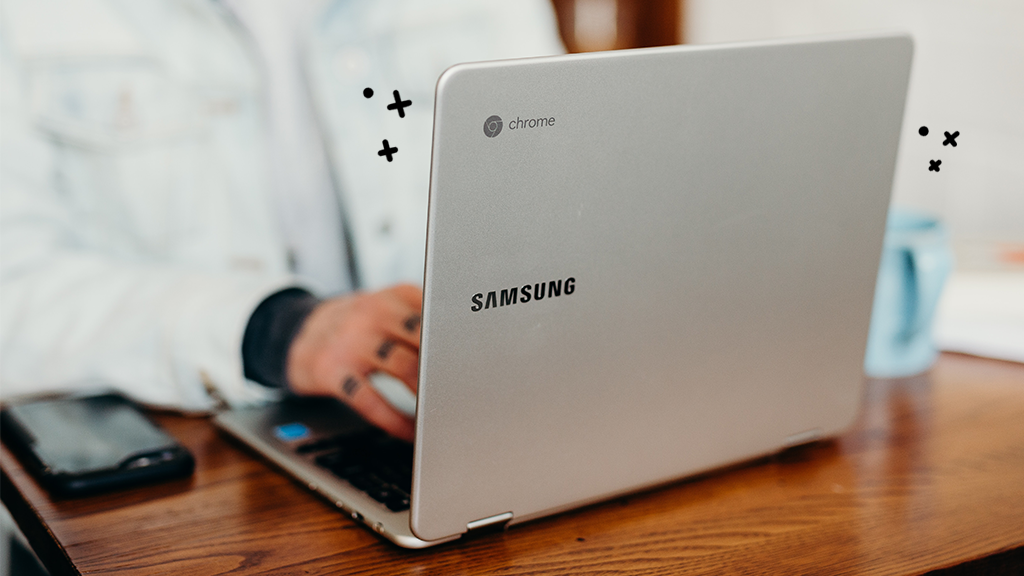Whether you're planning to sell, trade-in, or remove a virus from your MacBook®, completing a factory reset is the easiest way to wipe it clean. But before you do so, there are some important steps you'll need to take to back up your data and prevent glitches.
At Asurion, our experts help millions of customers with tech solutions like this every day on all their favorite devices. Here's a step-by-step guide to completing a factory reset on your MacBook.
When should you factory reset your MacBook?
Sometimes, a hard reset isn’t enough. Factory resetting your Mac reinstalls the operating system and removes all user data, making it essential for resolving deeper system problems, preparing your device for a new user, or enhancing its performance if it's slowed down significantly over time.
Before factory resetting your MacBook
Before you take the plunge and wipe your Mac clean, there’s a checklist to run through to ensure you don’t lose important data.
The following steps are for MacBooks running the Catalina operating system or later versions.
Backup your data
It’s crucial to back up your files to avoid losing important documents, photos, or applications. You can use Time Machine® or iCloud® to secure your data.
How to complete a Time Machine backup:
- Connect an external storage device to your Mac.
- Click the Apple menu in the upper-left corner of your home screen.
- Click System Preferences > Time Machine.
- Click Select Backup Disk.
- Select the name of your external storage device, then click Use Disk.
- Choose Back Up Now to start your backup.
How to complete an iCloud backup:
- Click the Apple menu in the upper-left corner of your home screen.
- Click System Preferences > Apple ID > iCloud. If prompted, sign in to your iCloud account.
- Unselect the Optimize Mac Storage checkbox.
- Select the apps you wish to back up in the Apps on this Mac using iCloud menu.
- If you wish to restore your Desktop settings, click Options next to iCloud Drive. A new window will appear. Choose Desktop & Documents Folders.
For more information, check out our guide to using iCloud.
Sign out of your Apple accounts
If you're planning on selling or giving away your Mac, you need to take this crucial step because of a security feature called Activation Lock. It prevents your computer from reactivating if its lost or stolen. So, if you're still signed in after erasing your Mac data, a new user won't be able to complete the setup process.
To sign out of iCloud:
- Click the Apple menu in the upper left corner of your home screen.
- Select System Preferences > Apple ID.
- Click Overview in the sidebar underneath your name and email address.
- Click the Sign Out button.
To sign out of Messages:
- Press command + space bar, then type “messages” in the Spotlight® search box.
- Open the Messages app.
- From the menu bar at the top, select Messages > Preferences.
- Select the iMessage icon, then click the Sign Out button.
Unpair Bluetooth devices
While this step is optional, we recommend unpairing Bluetooth® devices if you plan to wipe your Mac and give it to someone in your home. Doing so prevents your computer from accidentally picking up old signals if it remains in range of your connected devices.
To unpair Bluetooth devices from your MacBook:
- Click the Apple menu in the upper left corner of your home screen.
- Select System Preferences > Bluetooth.
- Select the devices you want to unpair by tapping the “X” button next to each device.
Reset NVRAM
This mouthful of an acronym stands for non-volatile random-access memory. It stores your screen resolution, volume preferences, and time zone information, among other data. Before resetting your MacBook, you'll want to make sure you reset the NVRAM to clear your user settings. This will keep your Mac from crashing when it restarts after you've wiped it.
How to reset your NVRAM:
- Turn off your Mac.
- Turn it back on and immediately press and hold option + command + P + R.
- Release them after 20 seconds.
5. Factory reset to erase your hard drive and reinstall macOS
If you've followed steps one through four, you're ready to factory reset your Mac. To start the process, you'll first need to put your Mac in Recovery Mode. Here's how:
- Turn off your Mac.
- Turn it back on, then immediately press and hold command + R. Release the keys when you see the Apple logo. If prompted, enter your username and administrative password.
- Select Disk Utility from the MacOS utilities window and click Continue.
- Click Macintosh HD in the Disk Utility sidebar underneath “internal.”
- Click the Erase button at the top of the window.
- In the box that says “Name,” type in Macintosh HD. In the “Format” box, choose APFS (this will appear for newer MacBooks) or Mac OS Extended (Journaled) (this will appear for older MacBooks) from the menu.
- Choose Erase Volume Group (this may also say Erase). Your factory reset will begin. When it's finished, click the Done button.
- Quit Disk Utilities by clicking the red “X” button in the upper left corner of the window. This should take you back to the MacOS utilities screen. If it doesn't, restart your computer again by holding down command + R until the utilities screen reappears.
- Select Reinstall macOS. Then click Continue and follow the onscreen instructions. When the welcome screen appears, hit the power button and shut down your Mac.
If you've tried these steps and still need a little help, we're right around the corner. Schedule a repair at the nearest uBreakiFix® by Asurion store and our certified experts can get your device back up and running as soon as the same day.






